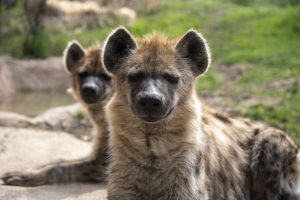On April 27, wildlife enthusiasts and conservationists around the globe mark a significant occasion – International Hyena Day. This day serves as an important reminder to celebrate and acknowledge one of the most enigmatic yet misunderstood creatures in the animal kingdom – the hyena. Often depicted unfavourably and overshadowed by the more iconic wildlife of Africa, hyenas play a pivotal role in maintaining the ecological balance of their habitats. International Hyena Day not only aims to elevate the hyena’s profile but also seeks to dismantle the longstanding myths and negative stereotypes that surround these fascinating animals

Contrary to the common portrayal of hyenas as mere scavenging laughers of the savannah, the Hyenidae family comprises four unique species, each with its distinct lifestyle and ecological niche. The most widely recognised is the spotted hyena, known for its robust build and vocal prowess, which roams the sub-Saharan savannas. The brown hyena, shyer and more reclusive, sticks to the southern regions of Africa, inhabiting desert areas and the fringes of forests.
In contrast, the striped hyena, with its less gregarious nature, can be found scattered across the Middle East and India, often lurking in scrublands and arid environments. Lastly, the aardwolf, which deviates from the typical carnivorous diet of its cousins, specialises in termite consumption and resides in the plains and bushlands of Eastern and Southern Africa.
Each species showcases remarkable adaptations that enable them to thrive in diverse and often harsh environments. The spotted hyena, for instance, is a skilled hunter and an opportunistic feeder, famous for its intelligence and complex social structures. Brown and striped hyenas are more solitary but no less fascinating, with their keen senses and remarkable foraging skills that allow them to survive in some of the most unforgiving landscapes.
Hyenas are a study in contrasts and curiosities, which manifest in both their physical and social characteristics. These animals are primarily known for their formidable jaws – the strongest among the carnivores relative to their size – capable of crushing bones to access the nutritious marrow inside. Their vocalisations, particularly the “laugh” of the spotted hyena, are actually communications used to convey excitement and frustration, or alert the clan to a meal.
Socially, hyenas are equally intriguing. Spotted hyenas, for example, live in complex matriarchal societies where females dominate. These females are not only larger but also more aggressive than their male counterparts, a trait attributed to higher levels of androgens during foetal development. This unique social structure is a rarity in the animal world and offers fascinating insights into the evolutionary strategies that have enabled hyenas to become one of Africa’s most successful predators.
Despite their resilience and adaptability, hyenas face significant threats that jeopardise their survival. Habitat destruction, due to expanding human settlements and agricultural activities, has fragmented their living spaces, reduced their hunting grounds and led to conflicts with humans. Additionally, they compete fiercely with other large predators for food, which can be scarce in their increasingly limited territories.
The conservation status of hyenas varies by species. While the spotted hyena is classified as of “Least Concern” due to its relatively stable population, the brown and striped hyenas are considered “Near Threatened” by the International Union for Conservation of Nature (IUCN), reflecting their more precarious situations. The ongoing decline in their populations highlights the urgent need for comprehensive conservation strategies that address both ecological and human-centric challenges.
Conservation efforts for hyenas involve a multifaceted approach that includes habitat preservation, conflict resolution strategies, and educational programmes to change public perceptions about these often-maligned creatures. Protected areas and wildlife corridors are essential for providing safe havens where hyenas can roam freely and fulfill their ecological roles. Initiatives like International Hyena Day boost these efforts significantly by promoting knowledge and fostering appreciation for hyenas, encouraging more people to participate in or support conservation activities.
As International Hyena Day approaches, let us change our perspective and see hyenas not just as survivors, but as indispensable players in their ecosystems. Their unique qualities and roles deserve admiration and respect. By supporting conservation efforts and educating others about the true nature of hyenas, we can help ensure these remarkable animals continue to thrive.
This special day reminds us of the complexity of nature and our responsibility to protect its myriad inhabitants, paving the way for a future where humans and hyenas can coexist peacefully. Let us celebrate the hyena: a true symbol of the wild’s adaptability and resilience.
By Assaf Levy, BioDB
